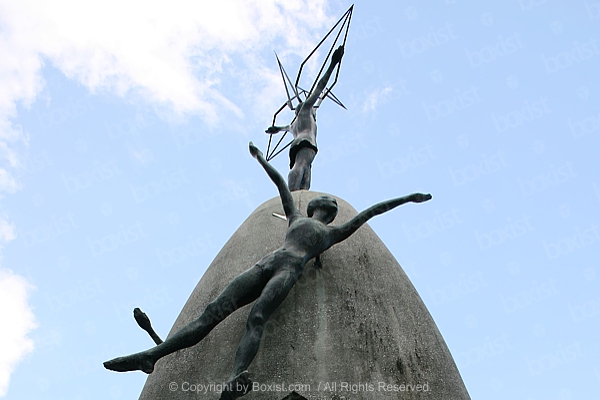The Castle Of Nagoya In Japan
The Castle Of Nagoya In Japan
This image showcases the iconic Nagoya Castle in Japan, specifically capturing the top floors adorned with distinctive green decorative tiles. The photograph is taken from outside the castle, providing a view that includes the lush green trees surrounding the historic structure. Nagoya Castle, a prominent Japanese castle located in Nagoya, was constructed by the Owari Domain in 1612 during the Edo period. The castle's architecture is a stunning example of traditional Japanese design, featuring multiple tiers with intricately designed rooftops and ornamental tiles. The green tiles and the natural surroundings add to the castle's majestic appearance, making it a symbol of Nagoya's rich cultural heritage.
Image ID#: 12795 / Category: Travel, Architecture / Price: 499$
PURCHASE A LICENSE
Get a License & Immediate Download: This image is available under our Comprehensive All-Inclusive Rights-Managed License, suitable for personal, non-profit, educational, business and commercial use.
| Size | Price | Buy |
|---|---|---|
| Original size | 499.00 |
Original file max size / Image type and details:
High quality JPG: 4000x2666 Pixels / File size: 2.74 Mb.
Available in up to 12,000 x 8,000 pixels (125 x 83.3 inches) at 300 DPI upon request.
License type: All-Inclusive Rights-Managed License.
License duration: Usage rights for a period of 1 Year from the date of purchase.
architecture ancient antique asia asian attraction building castle city culture defence east emperor fortification heritage japan japanese landmark landscape medieval old oriental palace region residence samurai shogun siege stone symbol tourism traditional walls wooden
Please note: While we strive to provide accurate descriptions for our images, please be aware that some descriptions may not be entirely accurate. Images may depict events, figures, symbols and descriptions may reflect the societal norms of their time, but may not align with current understanding as they are presented within their respective cultural or historical context.
© Copyright Notice: This image is the exclusive property of Boxist.com Photography (Photographer: Sam Mugraby), and is protected by copyright law. Unauthorized use of these images is prohibited. We reserve the right to pursue unauthorized users and to seek damages for copyright infringement.






